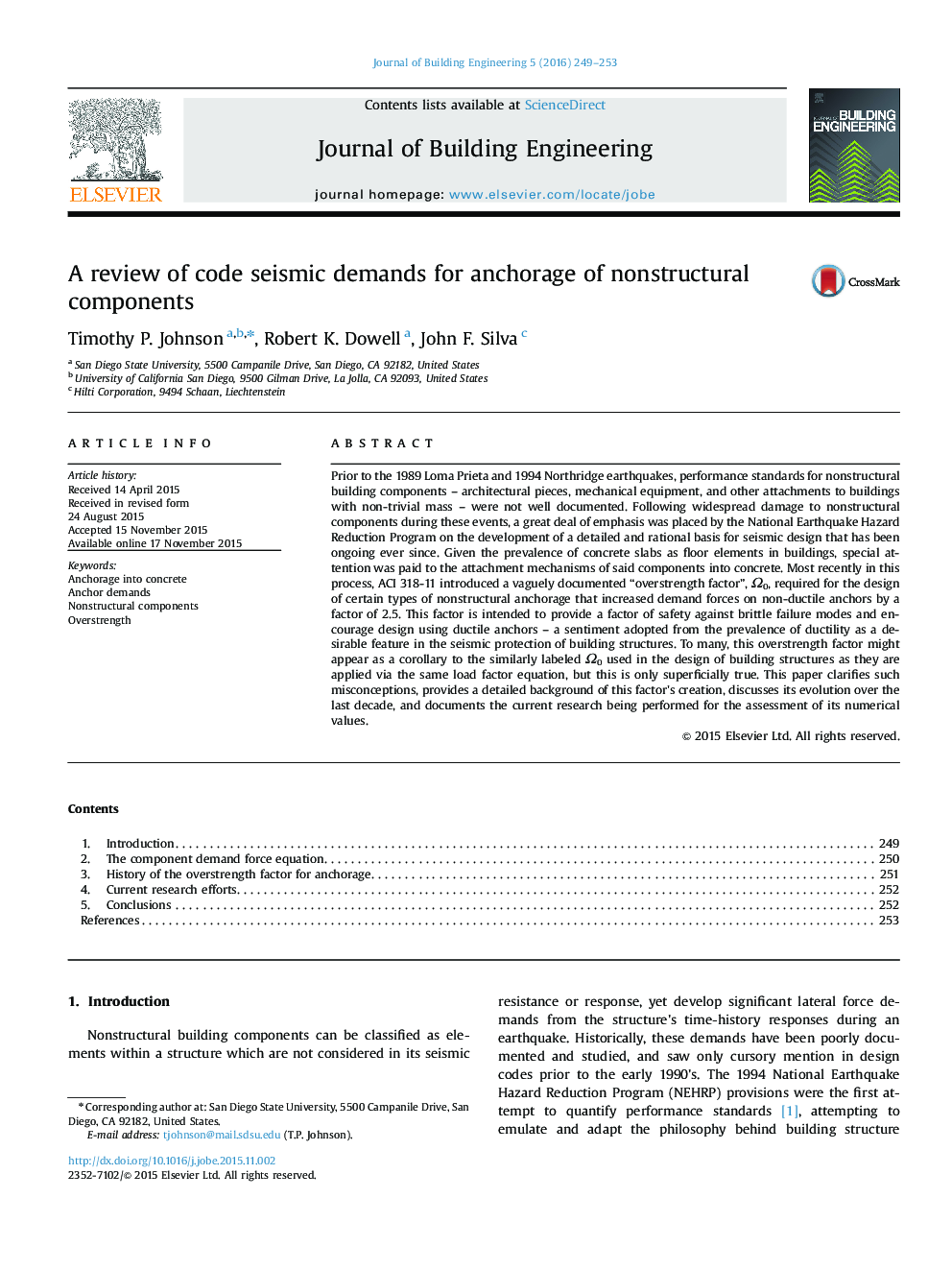| Article ID | Journal | Published Year | Pages | File Type |
|---|---|---|---|---|
| 283854 | Journal of Building Engineering | 2016 | 5 Pages |
•Overstrength factor for anchorage into concrete of nonstructural components.•History of code seismic demands for anchorage into concrete.•Protection of ductile vs. non-ductile anchorage in concrete using overstrength factors.
Prior to the 1989 Loma Prieta and 1994 Northridge earthquakes, performance standards for nonstructural building components – architectural pieces, mechanical equipment, and other attachments to buildings with non-trivial mass – were not well documented. Following widespread damage to nonstructural components during these events, a great deal of emphasis was placed by the National Earthquake Hazard Reduction Program on the development of a detailed and rational basis for seismic design that has been ongoing ever since. Given the prevalence of concrete slabs as floor elements in buildings, special attention was paid to the attachment mechanisms of said components into concrete. Most recently in this process, ACI 318-11 introduced a vaguely documented “overstrength factor”, Ω0, required for the design of certain types of nonstructural anchorage that increased demand forces on non-ductile anchors by a factor of 2.5. This factor is intended to provide a factor of safety against brittle failure modes and encourage design using ductile anchors – a sentiment adopted from the prevalence of ductility as a desirable feature in the seismic protection of building structures. To many, this overstrength factor might appear as a corollary to the similarly labeled Ω0 used in the design of building structures as they are applied via the same load factor equation, but this is only superficially true. This paper clarifies such misconceptions, provides a detailed background of this factor's creation, discusses its evolution over the last decade, and documents the current research being performed for the assessment of its numerical values.
